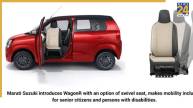Recycling cars: The process of salvaging useful parts and materials from end-of-life vehicles to be reused in manufacturing new products is known as recycling cars. This practice is crucial to reducing waste in landfills, conserving natural resources, and lowering greenhouse gas emissions.
Recycling cars also generate economic benefits for manufacturers and suppliers and create jobs in the recycling industry. In this article, we will explore the economic benefits of recycling cars and the steps involved in the auto scrap recycling process.
Economic Benefits of Recycling Cars
Recycling cars not only benefits the environment, but it also generates significant economic benefits. In this section, we will explore the economic advantages of recycling cars.
- Reduction of Waste in Landfills: Recycling cars diverts materials from ending up in landfills, which helps reduce the amount of waste that accumulates in the environment. This can also save valuable space in landfills that are already overfilled, which reduces the need to build new ones.
- Economic Benefits for Manufacturers and Suppliers: The junk cars recycling industry generates revenue for manufacturers and suppliers by providing a source of raw materials for manufacturing new products. This reduces the need for new raw materials and can also reduce the cost of manufacturing.
- Conserving Natural Resources: Recycling cars conserves natural resources by reusing materials that would otherwise be discarded. This can help reduce the need for new raw materials, which can help protect natural habitats and reduce greenhouse gas emissions associated with extracting and transporting raw materials.
- Creating Jobs in the Recycling Industry: Recycling cars can create jobs in the recycling industry. The process of dismantling, sorting, and processing materials requires skilled workers, and the industry is growing as more people become aware of the importance of recycling.
- Generating Revenue for Local Communities: Recycling cars can generate revenue for local communities through taxes and fees paid by recycling companies. This revenue can be used to support public services and infrastructure, such as roads, schools, and hospitals.
Environmental Benefits of Recycling Cars
Recycling cars is an effective way to reduce pollution, conserve natural resources, and lower greenhouse gas emissions. In this section, we will explore the environmental benefits of recycling cars.
- Reducing Pollution: Recycling cars helps reduce pollution by keeping hazardous materials out of the environment. End-of-life vehicles contain many hazardous materials, such as batteries, fuel, and oil, which can leak and pollute the soil and water.
- Saving Energy: Recycling cars can save energy by reducing the need for new raw materials. Extracting and transporting raw materials requires a significant amount of energy, and recycling can help reduce the amount of energy required.
- Lowering Greenhouse Gas Emissions: Recycling cars can also help lower greenhouse gas emissions. The production of new materials, such as steel and aluminium, is a significant source of greenhouse gas emissions. Recycling these materials can reduce the amount of greenhouse gas emissions associated with manufacturing new products.
Read More –SHIFT TECHNOLOGIES, ONLINE USED-CAR MARKETPLACE, CUTS WORKFORCE BY 30 PER CENT
Steps Involved in the Auto Scrap Recycling Process
The process of recycling cars is a complex one that involves several steps. In this section, we will explore the steps involved in the auto scrap recycling process.
- Vehicle Inspection and Preparation: The first step in the auto scrap recycling process is vehicle inspection and preparation. This involves removing any hazardous materials, such as batteries and fluids, and draining the fuel tank.
- Removal of Hazardous Materials: The next step is to remove any hazardous materials that are still present in the vehicle. This includes removing the battery, draining the fuel tank, and removing any other hazardous materials, such as mercury switches.
- Disassembly of the Vehicle: After the hazardous materials have been removed, the vehicle is disassembled. This involves removing all usable parts, such as engines, transmissions, and tires.
- Separation and Sorting of Materials: Once the vehicle has been disassembled, the materials are separated and sorted. Metals such as steel and aluminium are separated and sent to smelters for recycling, while other materials such as plastics and glass are sorted for reuse or sent to landfills.
- Recycling and Reuse of Materials: The final step in the auto scrap recycling process is the recycling and reuse of materials. The metals that have been separated and sorted are melted down and used to make new products, while other materials such as plastics and glass are recycled or used for alternative purposes, such as road construction or insulation.
Read More –HYUNDAI STARGAZER MPV LAUNCHED IN INDIA: PRICE, FEATURES AND MUCH MORE!
Conclusion
In conclusion, recycling cars is a win-win situation for everyone involved. By supporting the auto scrap recycling industry, we can help protect the environment, conserve natural resources, and create jobs while also generating revenue for manufacturers, suppliers, and local communities.
Read More – Latest Auto News













